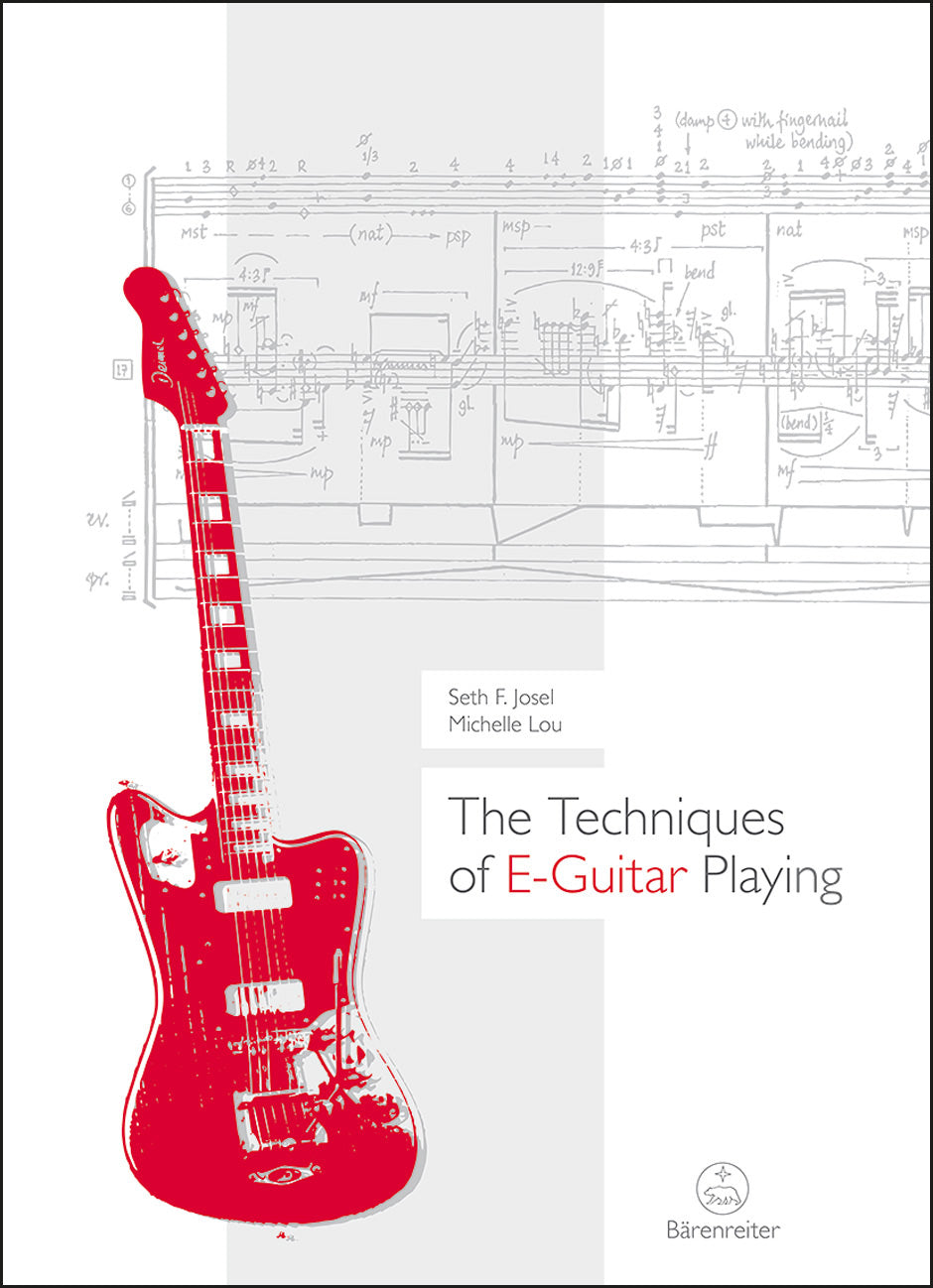The Techniques of E-Guitar Playing
In stock and typically ships within 1 business day.
- Authors: Seth F. Josel, Michelle Lou
- ISBN:
- Size: 8.3 x 11.4 inches
- Pages: 352
Seth F. Josel, a pioneering guitarist, and electroacoustic composer Michelle Lou have put together this long overdue book – not least inspired by a new generation of soloists who, through their extraordinary skills, have paved the way to a new understanding of instrumental performance practice.
This book presents detailed explanations of what is technically possible on the instrument as well as the accompanying electronic components. Composers will especially benefit from the research and elaborate analyses of contemporary e-guitar literature that include many examples of the instrument in chamber and ensemble musical settings. Also shown are diverse ways in which contemporary music for the e-guitar has been notated.
The book explores various right and left hand techniques, harmonics, use of foreign objects, signal processing, amplification and the e-guitar's relatives. of particular interest are extensive charts of multiphonics, and effects. Online sound files document a variety of the techniques illustrated in the book.
About the authors:
As an ensemble player and soloist, Seth F. Josel has been involved in the first performances of more than 100 works and has been a guest performer with leading orchestras. He has collaborated and consulted closely with such composers as Mauricio Kagel, Helmut Lachenmann, Tristan Murail and James Tenney. From 1991 till 2000 he was a permanent member of the Ensemble musikFabrik. His first book for Bärenreiter, co-authored by Ming Tsao, "The Techniques of Guitar Playing" (BVK02243), was published in 2014.
Composer and performer, Michelle Lou, received degrees in double bass performance and composition from University of California San Diego and Stanford University. Her work has been presented at festivals such as MaerzMusik, Donaueschinger Musiktage, Wien Modern, Rainy Days, Ultima, Darmstadt, Klangwerkstatt, Timepans, and MATA. She teaches composition and electronic music at the University of California San Diego.
With contributions by Richard Barrett, Daniel Brew, Daryl Buckley, Juan Parra Cancino, Nicolas Collins, Thomas Ciszak, Yaron Deutsch, Nicholas Deyoe, Wieland Hoban, Douglas Osmun, Aart Strootman, Ming Tsao, Samuel Vriezen. Interviews with Yaron Deutsch, Nicholas Deyoe, and Dan Lippel.
Publishers use a lot of words to describe what they sell, and we know it can be confusing. We've tried to be as clear as possible to make sure you get exactly what you are looking for. Below are descriptions of the terms that we use to describe the various formats that music often comes in.
Choral Score
A score for vocalists that only contains the vocal lines. The instrumental parts are not there for reference. Generally, cheaper than a vocal score and requires multiple copies for purchase.
Facsimile
Reproductions of the original hand-written scores from the composer.
Full Score
For ensemble music, this indicates that the edition contains all parts on a single system (there are not separate parts for each player). In larger ensembles, this is for the conductor.
Hardcover
Hardbound. Generally either linen-covered or half-leather.
Orchestral Parts
Similar to a wind set, this is a collection of parts. In the case of strings, the numbers listed are the number of copies included, though generally these are available individually (often with minimum quantities required).
Paperback
When publishers offer multiple bindings (e.g. hardcover) or study scores, this is the "standard" version. If you're planning to play the music, this is probably what you want.
Performance / Playing Score
A score of the music containing all parts on one system, intended for players to share. There are not separate parts for each player.
Set of Parts
For ensemble music, this indicates that there are separate individual parts for each player.
Solo Part with Piano Reduction
For solo pieces with orchestra, this is a version that contains a piano reduction of the orchestra parts. For piano pieces, two copies are typically needed for performance.
Study Score
A small (think choral size) copy of the complete score meant for studying, and not playing. They make great add-ons when learning concertos and small chamber works.
Vocal Score
A score prepared for vocalists that includes the piano/organ part or a reduction of the instrumental parts.
Wind Set
For orchestral music, this is a collection of wind and percussion parts. The specific quantities of each instrument are notated.
With Audio
In addition to the printed music, the edition contains recordings of the pieces. This may be an included CD, or access to files on the internet.
With / Without Fingering (Markings)
Some publishers prepare two copies - a pure Urtext edition that includes no fingering (or bowing) suggestions and a lightly edited version that includes a minimal number of editorial markings.



